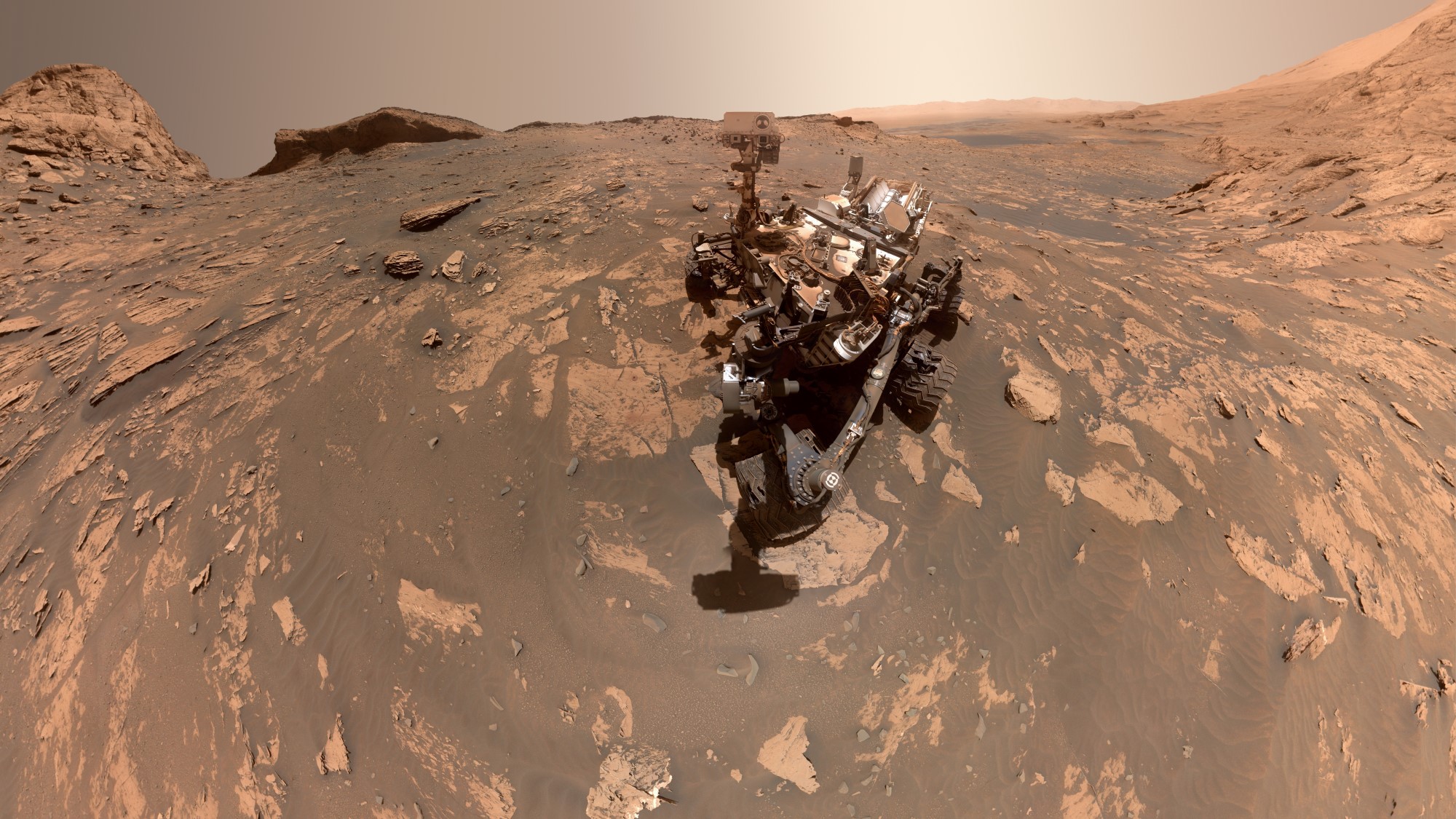Perseverance Mars rover files 1st detailed weather report
The average temperature at Jezero Crater is a chilly minus 67 degrees Fahrenheit (minus 55 degrees Celsius).

Mars' weather is proving to be turbulent and diverse over the Perseverance rover's landing site in Jezero Crater.
NASA's Perseverance rover is dotted with various weather sensors, collectively called the Mars Environmental Dynamics Analyzer (MEDA), which cover the rover's neck and deck; some are also housed in its interior. Scientists have now released MEDA's weather report for the project's first 250 sols (Martian days, which are each about 40 minutes longer than an Earth day), and the findings describe a surprisingly dynamic atmosphere near the Red Planet's surface.
MEDA, which was built by Spanish scientists led by José Antonio Rodríguez-Manfredi of the Centre for Astrobiology in Madrid, includes five button-sized sensors that routinely measure the Martian air temperature at four different altitudes to create a vertical temperature profile; two wind-speed sensors; and additional sensors to measure radiation, dust, humidity and air pressure.
Related: Mars rover Perseverance spots Ingenuity helicopter resting on sand dune (photo)
Spanning the Red Planet's northern hemisphere spring into early summer, the results focus on the "atmospheric surface layer (ASL)" — the lower layer of Mars' atmosphere that is in contact with the planet's surface. Heat and mass in the form of dust are exchanged between the surface and the ASL, with each region affecting the other.
Perseverance measured the average air temperature at Jezero to be minus 67 degrees Fahrenheit (minus 55 degrees Celsius), but this can vary by as much as 90 to 110 degrees F (50 to 60 degrees C), particularly between day and night. Air pressure also fluctuated, both daily and more noticeably on a seasonal basis as the carbon dioxide frost at the poles sublimated in the early summer "heat," bolstering the thin atmosphere.
"The pressure and temperature of Mars' atmosphere oscillate with periods of the Martian solar day … following the daily cycle of sunshine greatly influenced by the amount of dust and the presence of clouds in the atmosphere," a co-author of the report, Agustín Sánchez-Lavega of the Planetary Sciences Group at the University of the Basque Country in Spain, said in a statement.
Get the Space.com Newsletter
Breaking space news, the latest updates on rocket launches, skywatching events and more!
As the daytime sun warms the surface and lower atmosphere, pockets of air begin to rise, creating gentle turbulence that leads to some of the observed temperature fluctuations. The turbulence stops in the evening as the sun sinks down toward the horizon and solar heating drops off, allowing the air to settle, at least for a short time.
Then, Perseverance often measured instability returning to the ASL at the equivalent of about 2 a.m. local time on Mars. Similar returning instability was also witnessed by NASA's InSight lander, which ended its mission in December after four years on the Red Planet. MEDA has now confirmed that this is the result of the warm surface of the local terrain, enhanced by winds with gentle speeds to 6.5 to 13 feet (2 to 4 meters) per second driven by differences in the temperature of the surface.
Speaking of the wind, MEDA measured a daily wind cycle, with strong south-easterly gusts of 82 feet (25 m) per second around midday, weaker winds of 23 feet (7 m) per second in the afternoon, a wind-direction reversal at night, and no winds at all between 4 a.m. and 6 a.m. local time.
Previous findings have shown how Perseverance has detected dust devils passing over the rover and the accompanying change in air pressure.
"The dust devils are more abundant at Jezero than elsewhere on Mars, and can be very large, forming whirlwinds more than 100 meters [330 feet] in diameter," Ricardo Hueso, also of the Planetary Sciences Group at the University of the Basque Country, said in the statement. "With MEDA we have been able to characterize not only their general aspects [their size and abundance] but also to unravel how these whirlwinds function."
Understanding Mars' present-day atmosphere is important not just because of scientific curiosity. It can also affect missions landing on the planet. In addition, the 10 sample canisters left on the ground by Perseverance as it trundles around Jezero Crater will be constantly exposed to the atmospheric conditions for many years; the future mission meant to retrieve them is currently scheduled to land on the Red Planet in 2031.
The findings were published on Jan. 9 in the journal Nature Geoscience.
Follow Keith Cooper on Twitter @21stCenturySETI. Follow us on Twitter @Spacedotcom and on Facebook.
Join our Space Forums to keep talking space on the latest missions, night sky and more! And if you have a news tip, correction or comment, let us know at: community@space.com.

Keith Cooper is a freelance science journalist and editor in the United Kingdom, and has a degree in physics and astrophysics from the University of Manchester. He's the author of "The Contact Paradox: Challenging Our Assumptions in the Search for Extraterrestrial Intelligence" (Bloomsbury Sigma, 2020) and has written articles on astronomy, space, physics and astrobiology for a multitude of magazines and websites.









